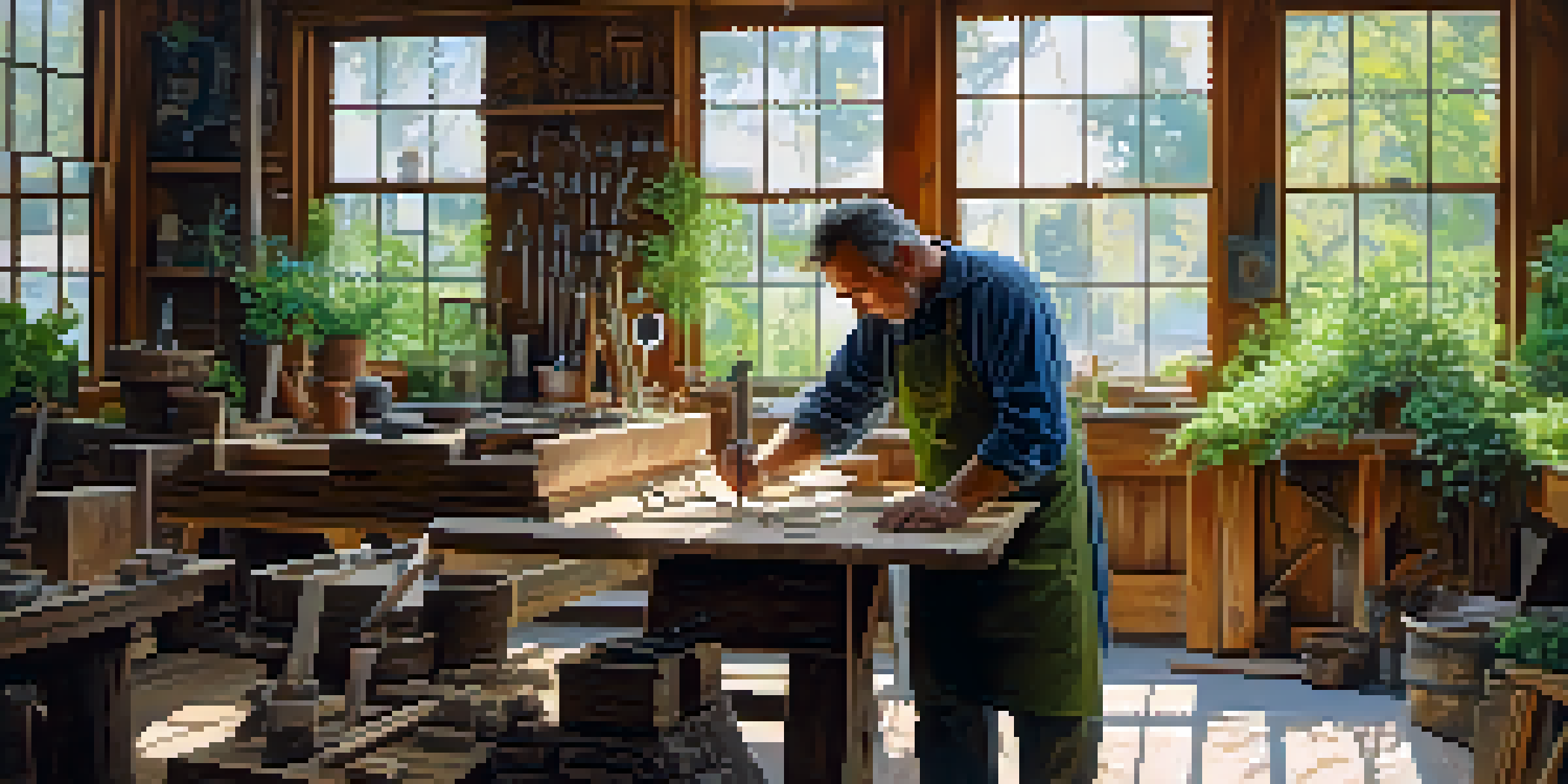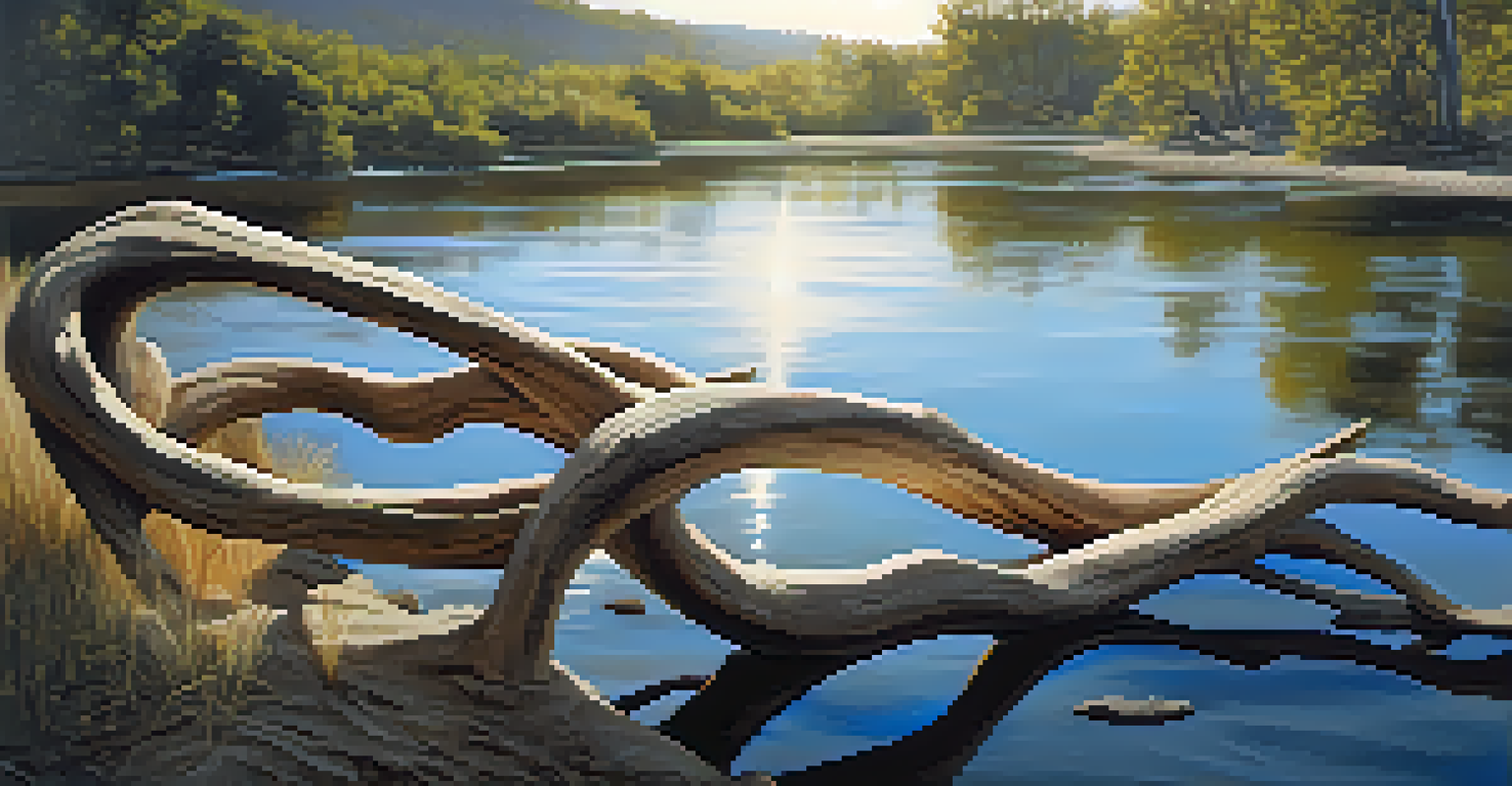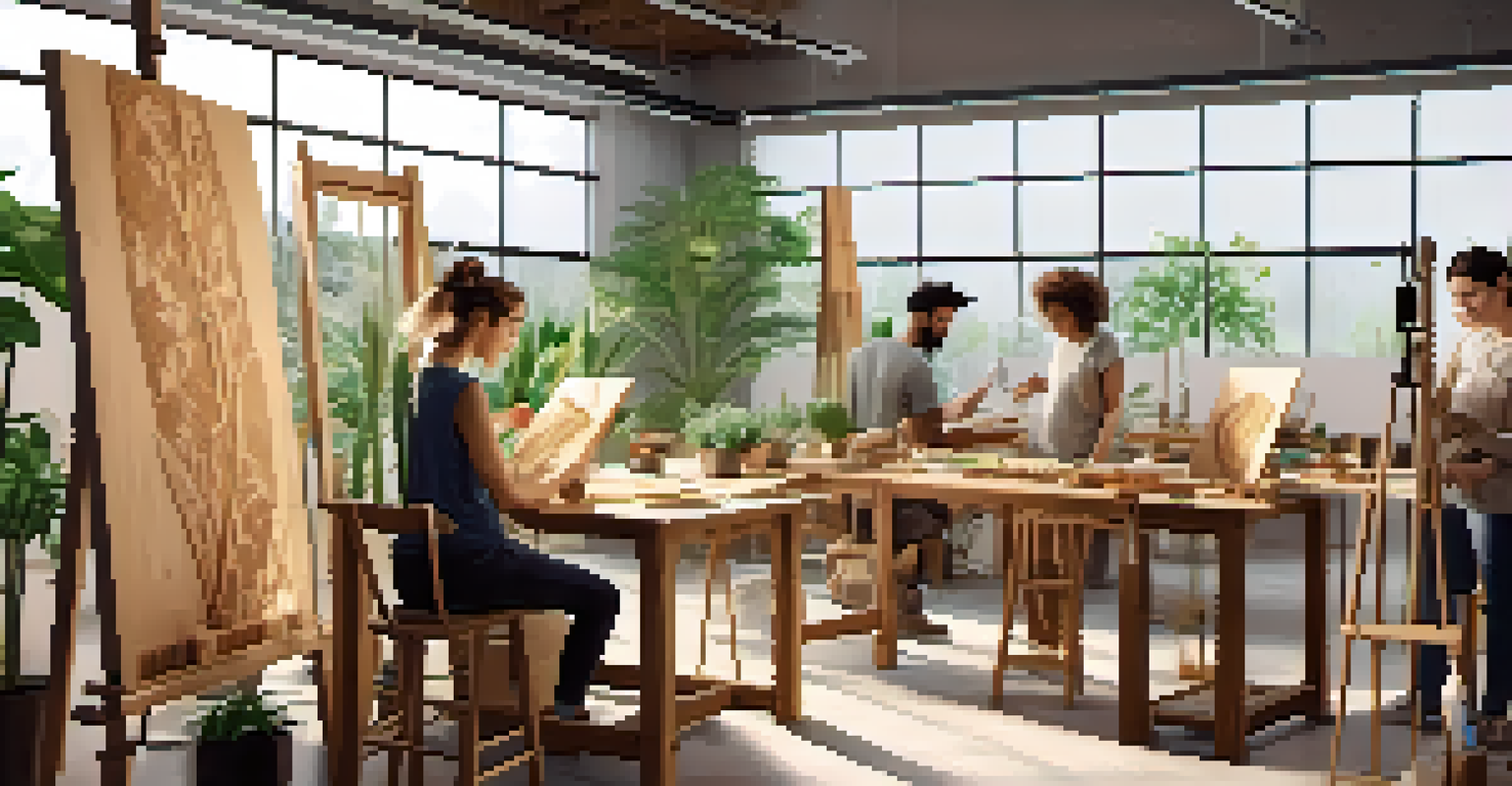Sustainability in Carving: Eco-Friendly Practices in Art

Understanding Sustainability in the Art of Carving
Sustainability in carving means creating art while minimizing environmental impact. Artists are now recognizing the importance of using materials and methods that are kinder to our planet. This approach not only helps conserve resources but also inspires a deeper connection to nature.
Art is not a mirror held up to reality, but a hammer with which to shape it.
Imagine a sculptor who chooses to work with reclaimed wood instead of newly harvested trees. By doing so, they are not just preserving forests but also telling a story of renewal and creativity. This practice embodies the spirit of sustainability, transforming waste into beautiful art.
Moreover, sustainability in carving encourages a shift in mindset. Artists can take pride in their ability to create without depleting the earth’s resources, fostering a sense of responsibility towards future generations.
Choosing Eco-Friendly Materials for Carving
An artist's choice of materials significantly impacts the sustainability of their work. Eco-friendly options include reclaimed wood, bamboo, and even biodegradable resins. These materials not only reduce waste but also often come with unique textures and colors that can enhance artistic expression.

For instance, using driftwood can add a story and character to carved pieces, transforming something that might be discarded into a sought-after artwork. This not only elevates the piece but also emphasizes the beauty of nature’s imperfections.
Sustainable Materials in Art
Artists can enhance their work by choosing eco-friendly materials like reclaimed wood and bamboo, which reduce waste and highlight nature's beauty.
Additionally, sourcing materials locally can minimize carbon footprints associated with transportation. By supporting local suppliers, artists can contribute to their community while ensuring their practices are more sustainable.
Innovative Techniques for Sustainable Carving
In the quest for sustainability, artists are also exploring innovative carving techniques. For example, some are adopting digital carving tools that reduce waste compared to traditional methods. These technologies allow for precise designs and often utilize materials more efficiently.
Sustainability is not a destination, but a journey we must all take together.
Another approach is the use of upcycling techniques, where artists transform discarded items into stunning sculptures. Imagine a piece created from old tools or machinery, breathing new life into what was once considered junk.
These innovative techniques not only lessen environmental impact but also inspire creativity. They challenge artists to think outside the box and find beauty in the unexpected.
The Role of Education in Eco-Friendly Carving
Education plays a crucial role in promoting sustainability within the carving community. Workshops and courses focused on eco-friendly practices equip artists with the knowledge to make better choices. This empowers them to incorporate sustainable methods into their artistic processes.
Sharing information about sustainable materials and techniques fosters a community of conscious creators. Artists can learn from each other’s experiences and collaborate on projects that highlight eco-friendly practices.
Innovative Techniques for Carving
Embracing digital tools and upcycling methods allows artists to minimize waste while encouraging creative expression.
Moreover, educational initiatives can raise public awareness about the importance of sustainability in art. When audiences understand the efforts behind the artwork, they may become more supportive of eco-friendly practices.
Examples of Eco-Conscious Carvers Making an Impact
Numerous artists are leading the way in sustainable carving, proving that eco-conscious practices can result in stunning art. For example, sculptor Chris Drury creates large-scale installations using natural materials, highlighting the relationship between art and the environment.
Another inspiring figure is woodworker Emily Pilloton, who emphasizes the use of local wood and traditional techniques. Her work not only reflects her commitment to sustainability but also educates others about the importance of ethical sourcing.
These artists are not just creating beautiful pieces; they are also making statements about environmental responsibility. Their dedication encourages others to consider how their artistic practices can contribute to a healthier planet.
The Community’s Role in Promoting Sustainable Carving
A supportive community is essential for fostering sustainable practices in carving. Local art groups and organizations can promote eco-friendly initiatives and provide resources for artists. By coming together, they can create a network that prioritizes sustainability.
Participating in community events focused on sustainability can also raise awareness. Art shows that showcase eco-friendly works encourage audiences to appreciate the value of sustainable practices in the arts.
Community Support for Sustainability
Local art groups play a vital role in promoting sustainable practices and advocating for policies that benefit both artists and the environment.
Furthermore, communities can advocate for policies that support sustainable art practices. By voicing their commitment to eco-conscious carving, they can influence changes that benefit both artists and the environment.
The Future of Sustainability in Carving
As awareness of environmental issues continues to grow, the future of sustainability in carving looks promising. More artists are making conscious choices to reduce their ecological footprints, paving the way for a new era of responsible artistry. This shift not only benefits the planet but also enriches the art world.
Anticipating upcoming trends, we may see even more innovative materials and techniques emerge. For instance, advancements in sustainable materials could lead to exciting new possibilities for carving, transforming how art is created.

Ultimately, the journey towards sustainability in carving is ongoing. As artists, communities, and audiences unite in their commitment to eco-friendly practices, we can look forward to a future where art and nature coexist harmoniously.